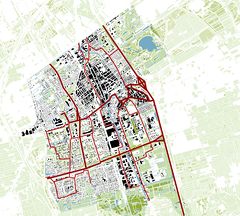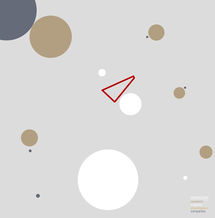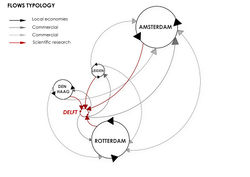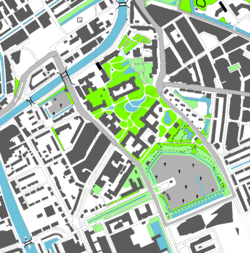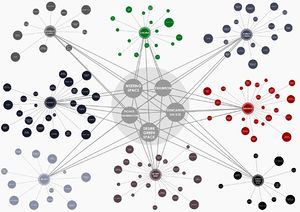atom06:Analysis
Contents |
Analyses to form an understanding of the physical constraints and possibilities of the location on various scales
Analyses not solely based on raw objective figures, they are a perspective on how the different work and are connected.
To create an initial starting point for the design intervention, we need to form a understanding of the actors and their networks relating to our site. At first we conducted interviews on the site and within identified main stakeholders.
Based on the interviews and research of plans and actors for the area we identified a body of intermediators (wikipedia link to the actor-network-theory), this type of analyzing data helped to organize the layers of information.
Analyzing activities per usergroup at different times and using Wikipedia and Twitter as sources of virtual data on existing communities.
Objective analyses
Mapping the city as a whole in terms of traffic, history, green spaces and buitlt up area, a feel for the context of the site can be created. This has provided a larger picture of the fabric in which the location is set, it has also shown that the site location is one in between two systems, the TU and residential area's.
It is crucial to know the current actors in the area to make a decision on the importance of possible activities of various actorsin the area at different times, this has been further analysed as part of the network analyses on the mapping of user activities.
Subjective analyses
Subjective analyses are an interpretation of the objective facts in the previous analyses. Options for the location configurations are also part of this group of data
Interviews
Deflt City, Environmental office
Diny Tubbing is the writer of the report Ecologieplan Delft 2004 - 2015, department of greenery of the city Delft
- Changing the roads
- Extending the water structure
- Park historical value & maintanance
Resident - Harry Koerts
- there is no connection between the residents and the TU
- the park is a green enclave in the city, but nobody uses it as it's hidden between busy roads
- in the evenings the park is unsafe
- (future) student residents will probably see the park as their back yard
Gardener at the botanical gardens - Karel Oberman
- in the beginning there were plans to extend to the Vries van Heystplantsoen, but the city didn't want to cooperate
- there even is a road going to the park, but now it just has a closed gate
- the gardens host musical events and facilitate workshops
- they sow into the community in that they also employ the handicapped
Director of the Science Center - Michael van der Meer
- the busy Mijnbouwstraat is a real hindrance to the public
- they feel separated from the TU because of the busy roads and the not-used park, they want to become ONE whole
- there is no parking, so people have to park behind the faculty of Architecture
- they want to expand
Network analyses
After the objective analyses and the subjective analyses, the goal is to gather information with the theoretical model (the actor-network-theory) in mind.
The result of these analyses are an understanding of how the current networks are related and function.
From these findings the concept of connections and redistribution of the networks has been set
The models of activities per usergroup are set up and show that there are matching activities per usergroup for the possibility for a better interaction on our location.
Conclusions
- The objective analyses reveal that our site is an in-between space among two systems: City system - TU system.
- Subjectively Delft has a large influence on the Randstad and the park as currently is, needs change to make it into a larger city park
- From the interviews we see that there is a desire, a need, that these two systems get more integrated and start to actively communicate and interact to create a better whole. The interviews back up the initial striving for a city park from several sides.
- The Network analyses show that the two systems do not cooperate or interact on a physical level very well, while on a virtual level there are some connections. The mapping of activities show that there are several matches to increase interaction between various user groups
